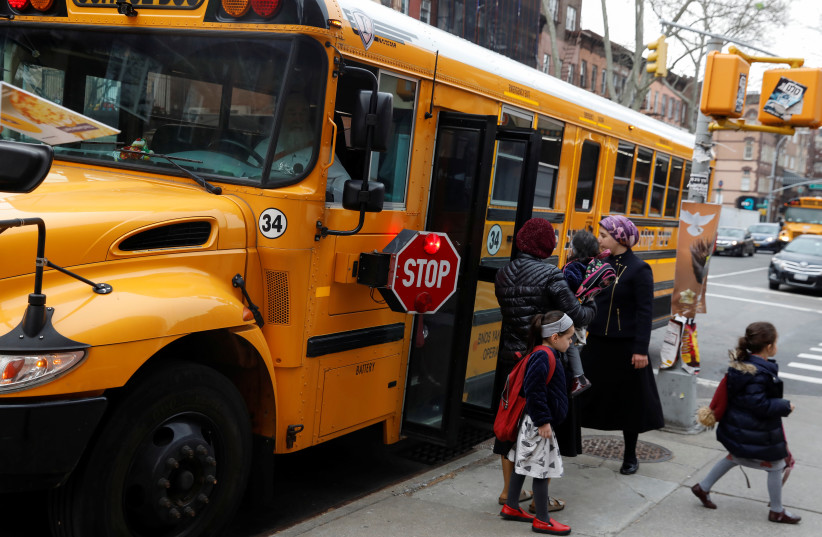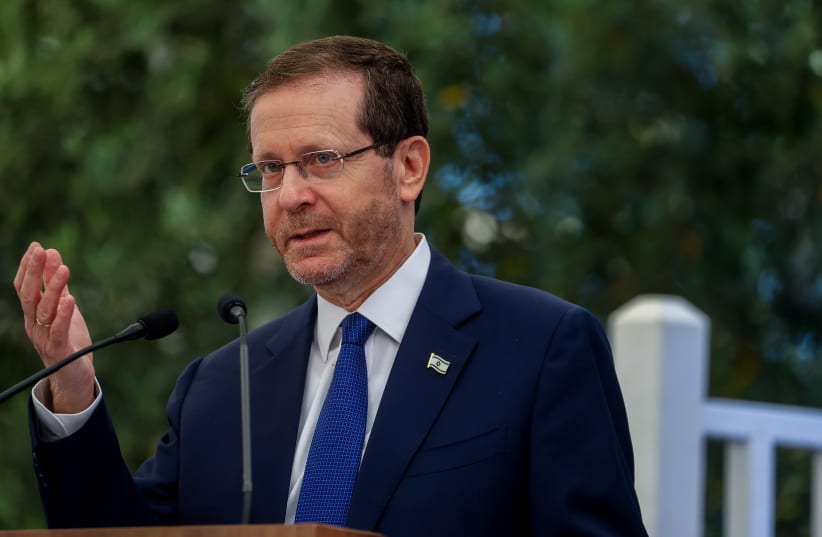It's fairly well-known that Rabbi Yitzhak Halevi Herzog, the grandfather of the President of Israel who bears the same name, went to Europe after the Holocaust on a mission to rescue Jewish children and return them to surviving parents or to other family members.
The churches, convents, and monasteries whose nuns and priests, along with lay people of goodwill, were reluctant to give them up. In the final analysis, he saved some five hundred children whom he brought back to the greatly decimated Jewish People.
But there were many more children whom he was unable to save.
There is a story told that one day, he arrived at a convent and found the Mother Superior amenable to his request but had asked how he would know which of the hundreds of children in the convent were Jewish. Most of the children had been in the convent for several months and even years during the war, and all had received a Catholic education.
Assuring the Mother Superior that he would know, Rabbi Herzog asked her to gather all the children in the large main hall. Rabbi Herzog stood on the stage and recited the Shma in a loud voice. Many of the children were familiar with it, and either joined in or shouted Amen, then rushed to the stage crying.


Of course, the youngest children did not know the prayer and could not be identified as Jews. But the mission did meet with impressive, albeit partial success.
Syrian Jewish community in New York
Rabbi Eli Mansour, who is the spiritual leader of the large Syrian Sephardi community of New York and who is the rabbi of the Edmond J. Safra Synagogue in Brooklyn, told another story about Rabbi Herzog, which in fact, had been previously told to the president by Rabbi Berel Wein, a Chicago born Rabbi who lives in Jerusalem, but who as a 12-year-old boy met Rabbi Herzog when the latter visited Chicago in 1946.
Mansour, together with Gladys Haddad, an executive Board member of the Sephardic Community Center, led a Syrian Jewish community of New York solidarity mission to Israel and met with President Herzog at the President's Residence in Jerusalem.
In relating the story of Rabbi Herzog's visit to Chicago as told by Rabbi Wein, Mansour said that Rabbi Herzog had come to the school where Wein had been a student and had spoken of his visit to the Vatican and his conversation with the Pope about returning Jewish children to their families and their faith.
Rabbi Herzog had presented the Pope with a list that contained thousands of names, but the Pope had told him that any child who enters a Catholic institution and is baptized must remain a Christian forever. As he spoke of this, Rabbi Herzog burst into tears, but then he straightened up, looked out at his young audience, and said: "I cannot do anything more for these children, but you, what do you intend to do for the Jewish People? What do you intend to do to revitalize the Jewish People?"
President Herzog had actually heard the story personally from Rabbi Wein, but he is a person who enjoys telling and hearing stories about his relatives, so he was happy to hear the story again.
Gladys Haddad, who in her younger years had been a student at a Jewish Day School, recalled going with the school to Poland. They went to camps on several consecutive days. While she found it interesting, she felt no emotion while other youngsters were crying.
On the third day, they went to Auschwitz, and as they were leaving, Haddad's eye caught the display of boots and shoes of adults and children who had been murdered there. She started to think about the people who had worn those boots and shoes, of the communities in which they had lived, and of the many facets of life in a community and the communities that no longer existed – and then she wept, crying copious tears.
The same feeling came over her, she said, when she and the delegation visited Kfar Aza, and she began to think about how the evil perpetrated by Hamas had caused the disintegration of communities in southern Israel.
Most of the approximately 40 people in the delegation, she told Herzog, were key members of various Jewish institutions and organizations, so it was more than just a Syrian Sephardic mission.
Herzog made the point that, unlike other major events in the saga of the Jewish people, this is not ancient history. This is something that everyone currently living can tell their children and grandchildren.
The attack on October 7 was not just against Israel but an attack on all Jews around the world, he said, adding that it can be seen in the attitudes of Jewish people.
"We will win and survive," he declared, alluding to failed attempts over the centuries to eliminate the Jewish people.
Noting the number of institutions and organizations with which members of the delegation are involved, he told them that they had an important message to deliver to schools, university campuses, and institutions.
As many of his guests had roots in Aleppo, also known as Haleb, Herzog said it was tragic that Syria has been a center of conflict and hatred for so many years.
In reference to the once illustrious Jewish community of Haleb, Herzog said that during the Second World War, the Belzer Rebbe Aharon Rokeach had been among the Jewish refugees who made the fraught journey through Nazi-occupied Europe and found their way to the ancient Jewish community of Haleb from which he was subsequently smuggled into the Land of Israel.
With all the destruction, death, and grief experienced in a period of almost three months, Herzog said that there was hope that was derived from global Jewish solidarity and the incredible people and soldiers of Israel. He has personally traversed the country and has visited Hostages' Square in the plaza in front of the Tel Aviv Museum of Art, in places where evacuees are being accommodated, at army bases, and at hospitals where wounded soldiers are being treated.
"A great light has been shed by our people who have volunteered in so many different ways," he said.
The delegation presented Herzog with a giant, beautifully engraved silver mezuza and the inscribed parchment that goes with it. The mezuza is one of the most veteran items of Jewish symbolism, inspired by the Biblical exodus from Egypt.
On receiving it, Herzog told his guests that Jewish symbolism is part and parcel of the President's Residence and indicated the ceiling, which contains 63 individually painted squares by German-born Holocaust survivor Naphtali Bezem, which symbolize the history of the Jewish People from Jacob's ladder to the establishment of the State of Israel and the homecoming of the Jewish People. The floor-to-ceiling stained glass windows by Reuven Rubin are also symbolic and represent Jacob's struggle with the angel.
